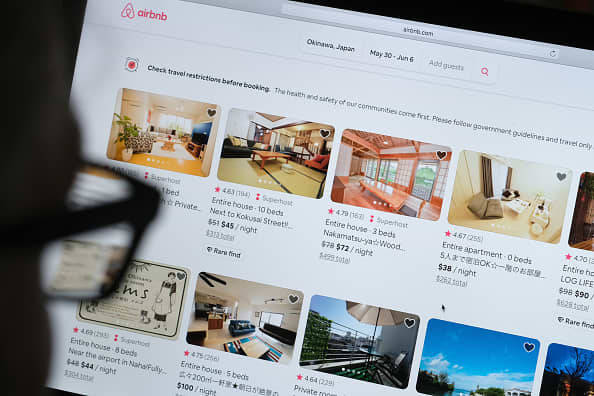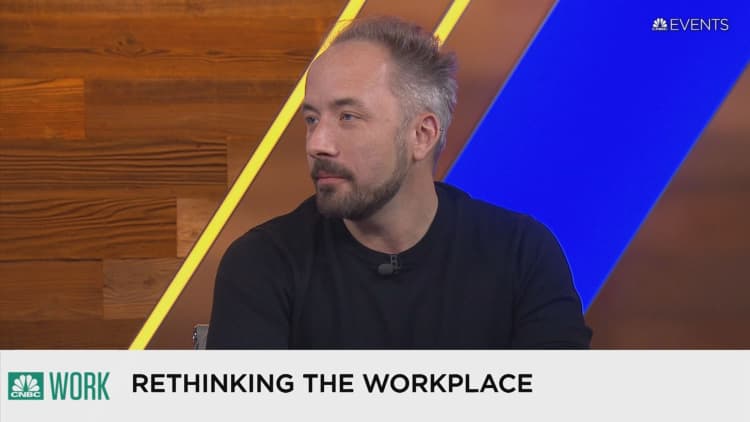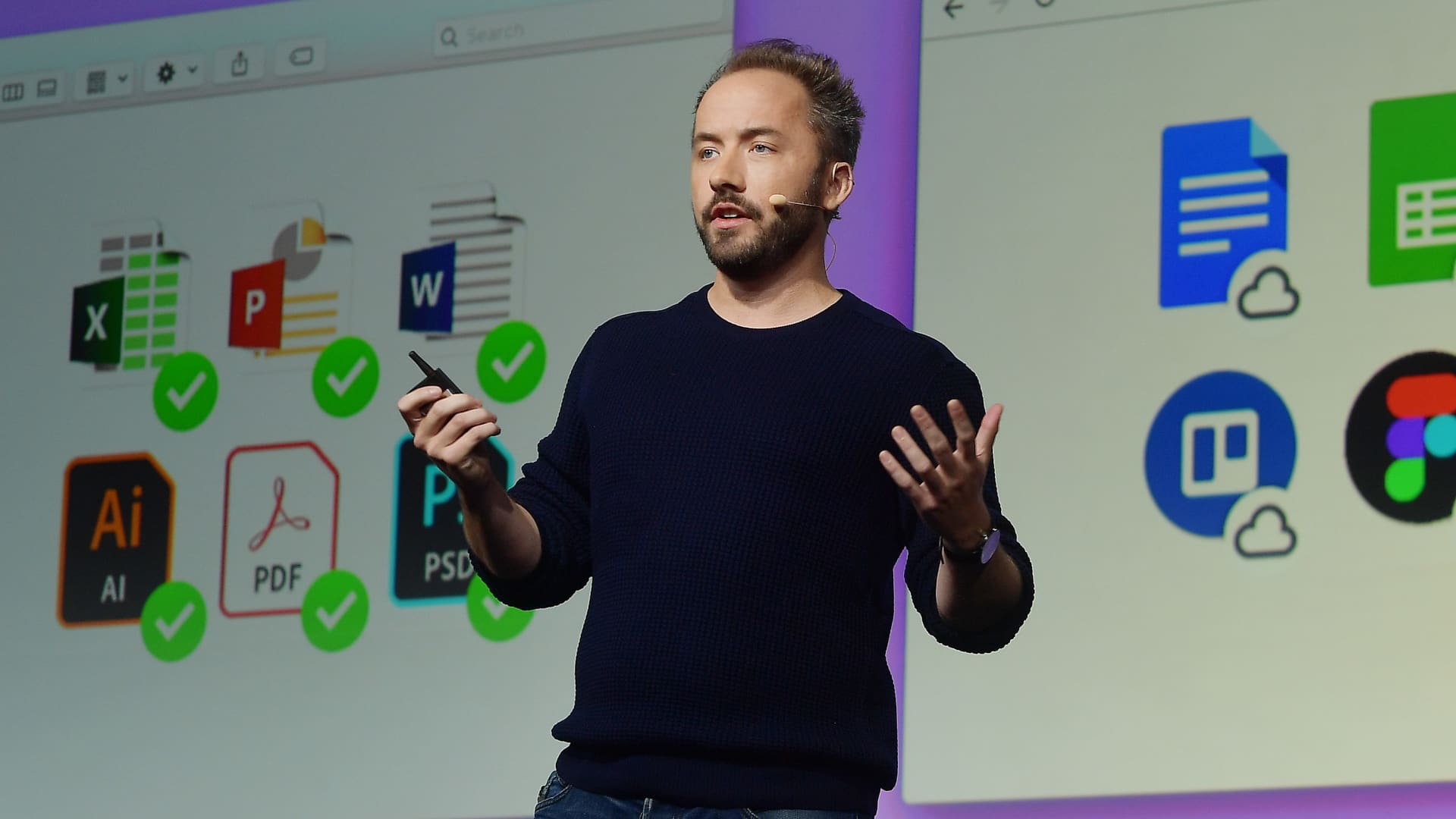Dropbox CEO Drew Houston speaks onstage during the Dropbox Work In Progress Conference at Pier 48 on September 25, 2019 in San Francisco
Matt Winkelmeyer | Dropbox | Getty Images
Dropbox made splashy headlines in 2017 when the software company signed the biggest office lease ever in San Francisco, securing 736,000 square feet over 15 years in the city’s Mission Bay neighborhood.
The combination of a global pandemic in 2020, which led to a boom in remote work, followed by a downturn in the tech market last year has turned that massive space into a financial albatross with an original minimum commitment of $836 million. As of September, that number sat at $569 million.
related investing news


Dropbox said in its fourth-quarter earnings statement on Thursday that it recorded an impairment in the period of $162.5 million “as a result of adverse changes in the corporate real estate market in the San Francisco Bay area.” Its total real estate impairment for the year was $175.2 million. Although high, it is still well below the $400 million hit the company took in late 2020.
Of all the major U.S. markets, San Francisco has been among the slowest to rebound from the Covid pandemic because of its heavy reliance on the tech industry, which has generally maintained a hybrid workforce and, in some cases, has gone fully remote.
Dropbox opted to go “virtual first” in 2020, announcing in a blog post that “remote work (outside an office) will be the primary experience for all employees and the day-to-day default for individual work.” That reduced the company’s need for office space and pushed it to find tenants to sublease significant chunks of its headquarters.
While Dropbox was able to sublease pieces of its real estate to some biotechnology companies, there isn’t enough demand to account for all of the company’s empty space. Tim Regan, Dropbox’s finance chief, said on Thursday that the subleasing environment has become more difficult than management had anticipated, and the company is no longer assuming it will sublease additional space in San Francisco in the next few years.
“We were relatively quick to market with our subleasing plans, but the market has deteriorated, with many companies reducing their real estate footprint,” Regan said. “And there’s certainly been an increase in supply for real estate for sublease, which has pushed out our anticipated time to lease.”
The office vacancy rate in the third quarter was 24% in San Francisco, higher than it’s been since at least 2007, according to city figures. Salesforce, Airbnb, Uber and Zendesk are among other companies that have taken real estate impairments in the city. Yelp put its San Francisco headquarters up for lease in 2021.
Dropbox executives had expected to sublease the company’s property in the city in mid-2023. They’ve pushed that target back two years, and lowered the rates the company expects to receive.
“We’ve certainly been active, and we continue to be active in partnering with our landlord in searching for subleases,” Regan said. “But at this point in time, this is our revised assumption, just given what we’re facing at this moment.”
WATCH: Silver Linings Playbook: How Dropbox leaned into the Pandemic Curve



























































![Mason Ramsey – Twang [Official Music Video] Mason Ramsey – Twang [Official Music Video]](https://i.ytimg.com/vi/xwe8F_AhLY0/maxresdefault.jpg)






















